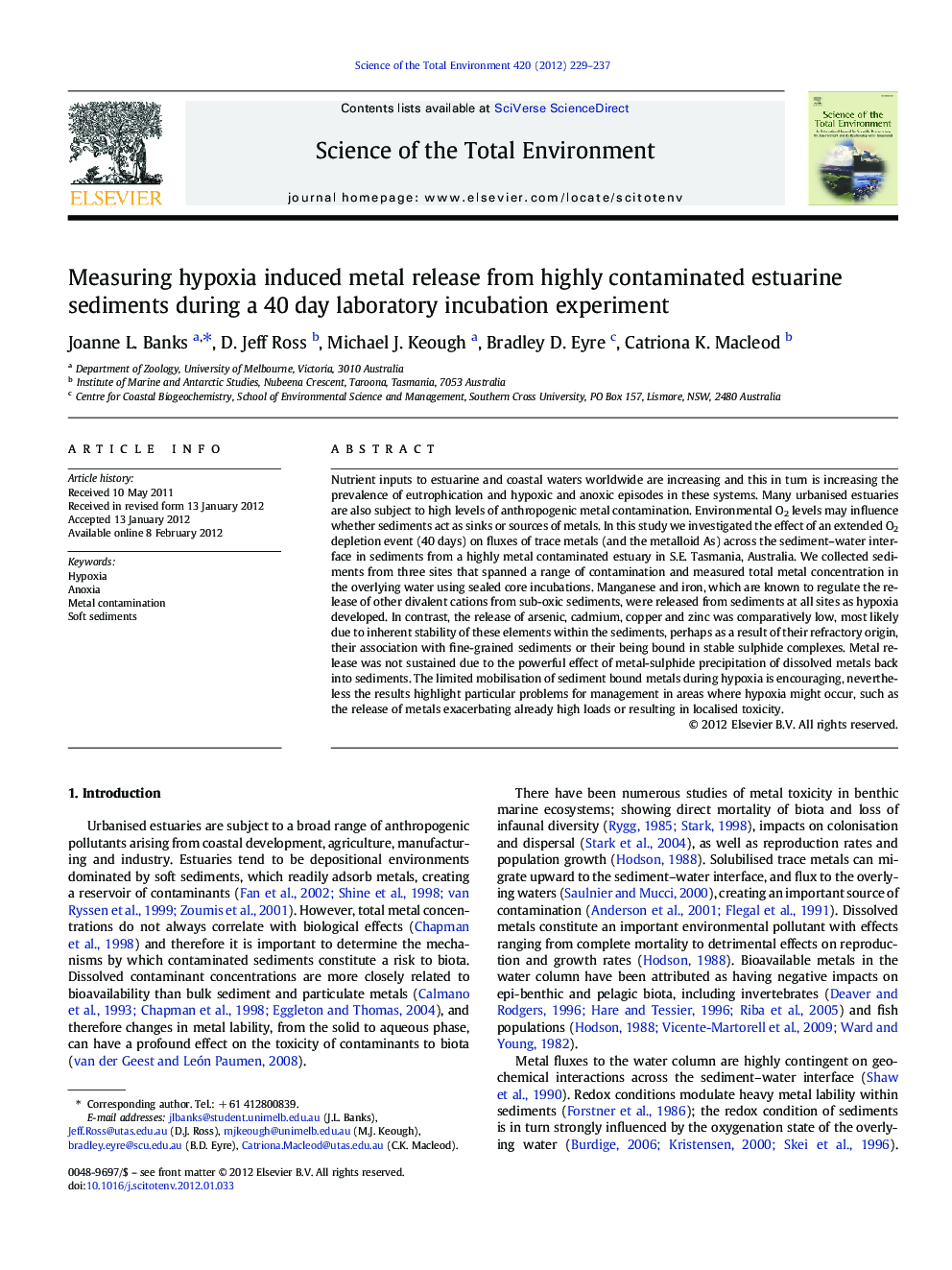| کد مقاله | کد نشریه | سال انتشار | مقاله انگلیسی | نسخه تمام متن |
|---|---|---|---|---|
| 4429635 | 1619830 | 2012 | 9 صفحه PDF | دانلود رایگان |

Nutrient inputs to estuarine and coastal waters worldwide are increasing and this in turn is increasing the prevalence of eutrophication and hypoxic and anoxic episodes in these systems. Many urbanised estuaries are also subject to high levels of anthropogenic metal contamination. Environmental O2 levels may influence whether sediments act as sinks or sources of metals. In this study we investigated the effect of an extended O2 depletion event (40 days) on fluxes of trace metals (and the metalloid As) across the sediment–water interface in sediments from a highly metal contaminated estuary in S.E. Tasmania, Australia. We collected sediments from three sites that spanned a range of contamination and measured total metal concentration in the overlying water using sealed core incubations. Manganese and iron, which are known to regulate the release of other divalent cations from sub-oxic sediments, were released from sediments at all sites as hypoxia developed. In contrast, the release of arsenic, cadmium, copper and zinc was comparatively low, most likely due to inherent stability of these elements within the sediments, perhaps as a result of their refractory origin, their association with fine-grained sediments or their being bound in stable sulphide complexes. Metal release was not sustained due to the powerful effect of metal-sulphide precipitation of dissolved metals back into sediments. The limited mobilisation of sediment bound metals during hypoxia is encouraging, nevertheless the results highlight particular problems for management in areas where hypoxia might occur, such as the release of metals exacerbating already high loads or resulting in localised toxicity.
► Metal contaminated sediments exposed to long-term hypoxia released Mn and Fe pulses.
► As flux increased under anoxic conditions Cd, Cu and Zn fluxes occurred only during the first week of hypoxia.
► Flux of these metals from 3 sites was not related to total sediment metal loads.
Journal: Science of The Total Environment - Volume 420, 15 March 2012, Pages 229–237